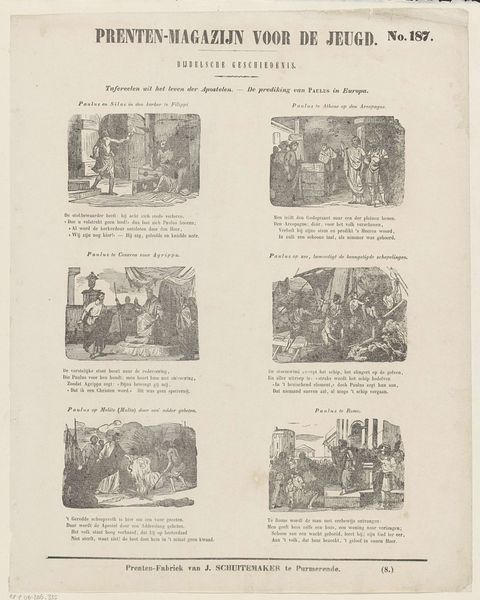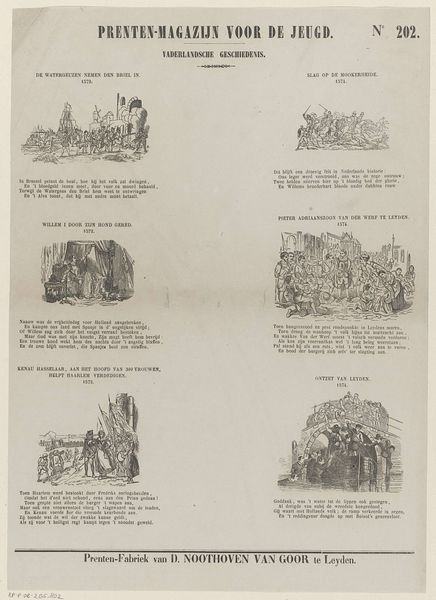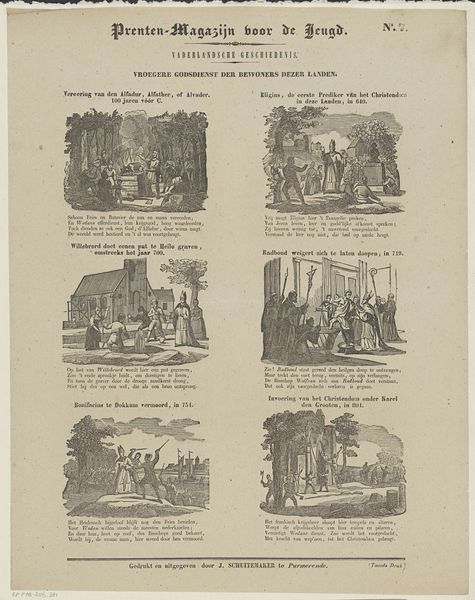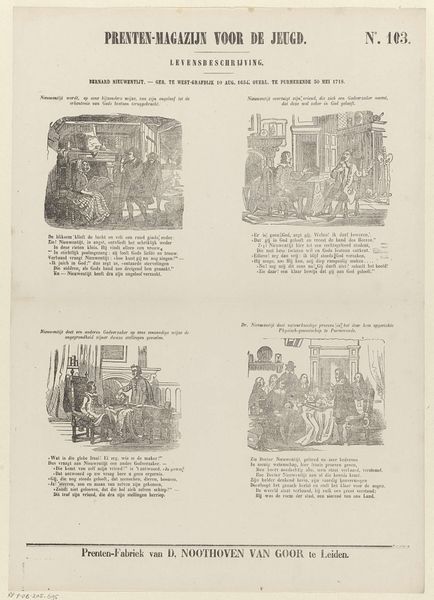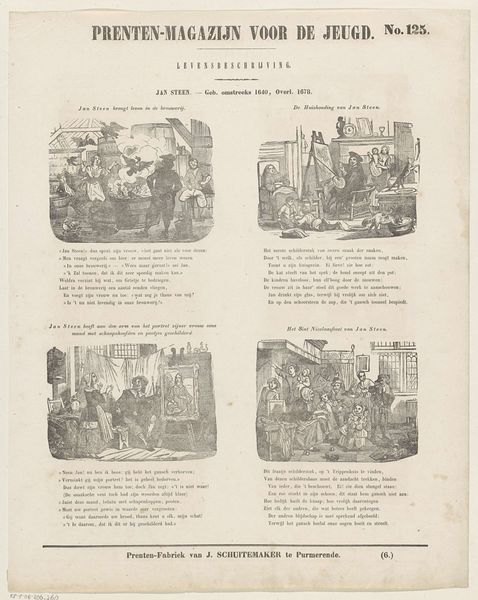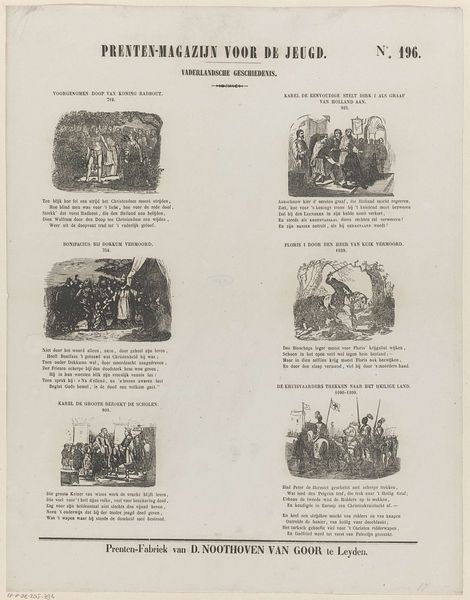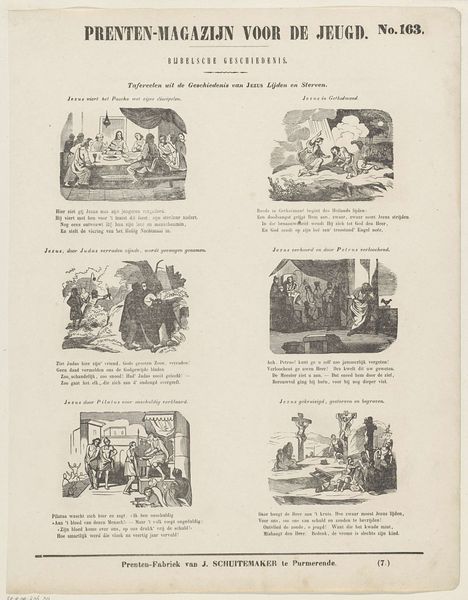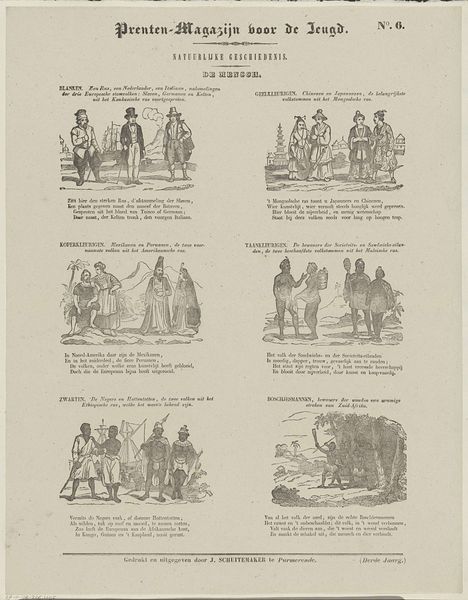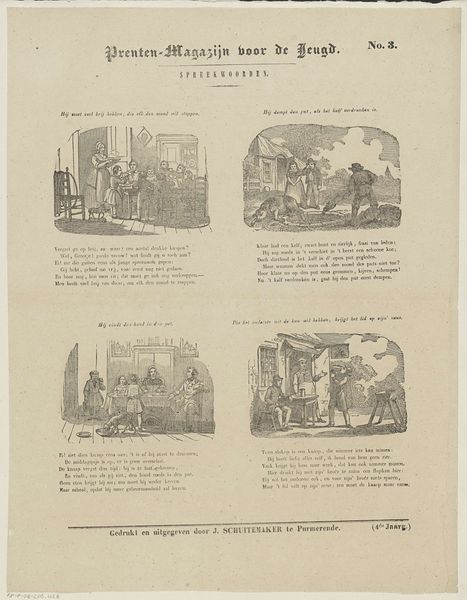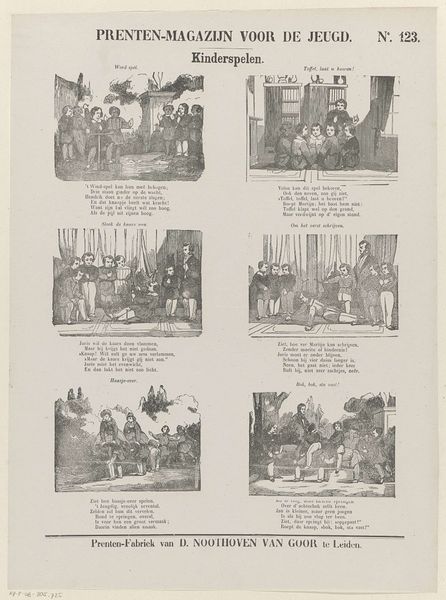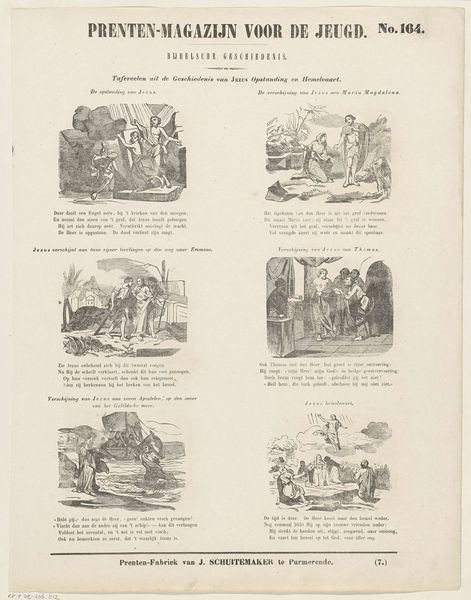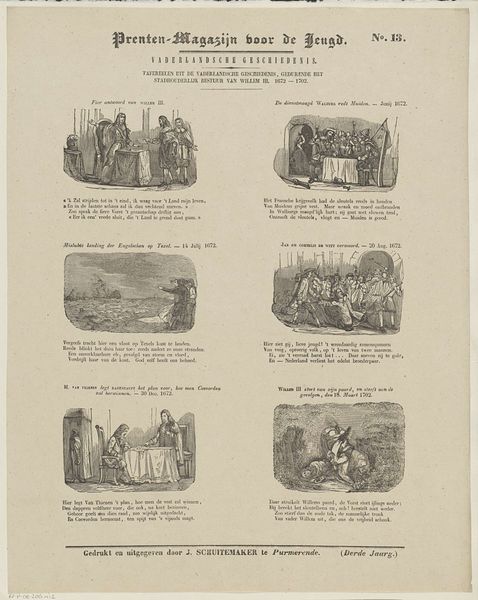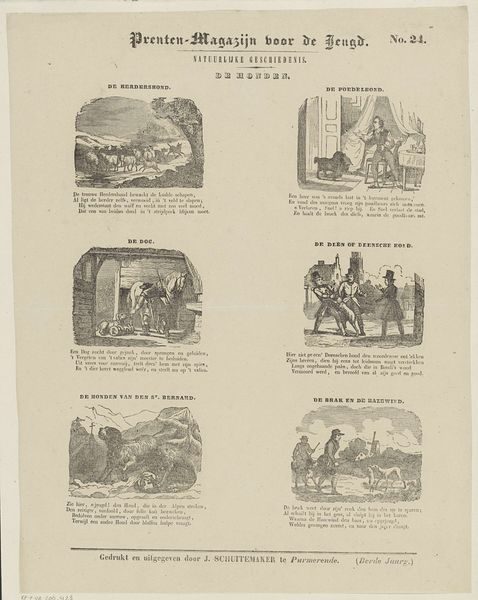
graphic-art, print, textile, engraving
#
graphic-art
#
narrative-art
#
dutch-golden-age
# print
#
textile
#
genre-painting
#
engraving
Dimensions: height 429 mm, width 333 mm
Copyright: Rijks Museum: Open Domain
Curator: Here we have an engraving titled "Jan Steen. - Geb. omstreeks 1640, Overl. 1678," published in 1847 and currently held at the Rijksmuseum. The text indicates the artist's birth and death dates. It features several vignette scenes from the life of Jan Steen. Editor: It’s visually quite dense, isn't it? The multiple panels give it a feeling of both being carefully arranged, and yet somewhat chaotic, mimicking Steen’s often-busy compositions themselves, I suppose. The starkness of the engraving highlights the underlying form. Curator: Precisely! Consider how the graphic arts, in this particular era, used techniques like hatching and cross-hatching to suggest tonality and depth. This piece cleverly imitates the lively atmosphere for which Jan Steen's genre paintings were known. Each scene tells a small story. The print's existence speaks to a market that yearned for these images to be more widely spread, influencing social life through material circulation. Editor: And how these scenes are made, printed using relatively simple, reproducible methods. It is printed and issued by J. Schuitemaker in Purmerende. Look at the contrast created with line, suggesting texture—the drapery in the interior scene, or even the billowing steam from the first scene. You see the transfer of knowledge from artisanal work into printed mass consumption. Curator: These textural differences are paramount. They direct our eyes around each picture within the composition, contributing rhythm to the overall design. See how lines direct the gaze! Editor: Thinking materially, it’s remarkable how the relative ease and affordance of prints brought art closer to a wider public than could previously own original paintings, changing dynamics around who gets to engage with visual culture and at what cost. We observe an artwork and must consider the physical production itself. Curator: Absolutely, focusing on materiality expands understanding—this analysis offers new modes of appreciation, rather than relying solely on narrative, symbolic interpretation, or even biography, in this case. Editor: Exactly, focusing instead on that intersection of craftsmanship, reproduction, and reach deepens one’s awareness, right?
Comments
No comments
Be the first to comment and join the conversation on the ultimate creative platform.

